We’re here to look at the best varieties of shelling peas, Pisum sativum, to grow in your garden. But first I have a confession to make.
I love to make very strong recommendations about what people should do in almost every situation. And I like it even better when people follow my advice.
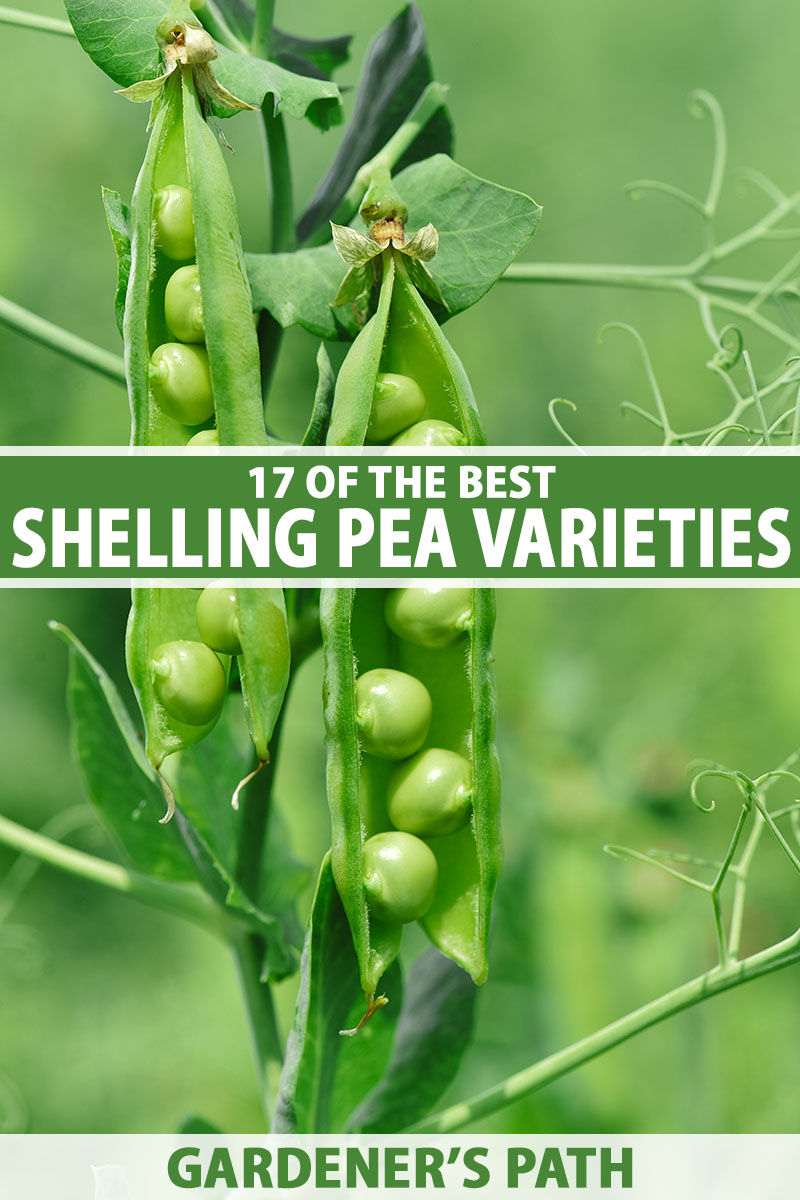
We link to vendors to help you find relevant products. If you buy from one of our links, we may earn a commission.
But here, I simply cannot tell you which English pea to select!
When we’re talking about peas, there are just so many good ones. And there are personal reasons why you might like one variety instead of another.
Some are extra short, for example, or very quick to produce. Others have purple pods – and how can you resist pods that are purple?
Instead of pushing just one “best” choice, I’m going to present 17 of the best, and let you narrow down your options based on your individual growing situation.
Here are the varieties we’ll cover:
17 of the Best Shelling Peas
1. Alaska Early
These vigorous four-foot vines produce a harvest 57 days after sowing, so even gardeners in regions where spring is cool and frosty can enjoy homegrown English peas. (This does indeed include Alaskans!)
‘Alaska Early’ comes in handy for folks coping with early-onset summers, too, because you’ll have picked and eaten quarts already and maybe frozen some more before the heat halts production.
And you don’t have to sacrifice taste or yield for the speedy harvest, since this hybrid variety yields five to eight plump, sweet seeds in each two-and-a-half to three-and-a-half-inch pod.

Keep them picked and they’ll keep producing as long as their cool-weather growing needs are met.
Find ‘Alaska Early’ seeds available from Country Creek Acres via Amazon.
2. Burpeeana Early
When you have a small space for gardening and a narrow window of opportunity for growing peas to a harvestable state, the memorably-named ‘Burpeeana Early’ bush-type cultivar may be just the ticket.
It matures 63 days from sowing and produces three-inch straight pods on two-foot vines.
Harvest eight to 10 medium to large peas from each pod, and count on heavy yields from these petite-but-mighty heirloom plants that were first introduced in 1949.
Packets of 200 seeds are available from – you guessed it – Burpee.
3. Canoe
Tip a canoe and eat your peas, too? That sounds like a political campaign motto from the 1940s, but it’s actually good harvest advice for the home gardener regarding the ‘Canoe’ variety.
This cultivar produces about a dozen seeds in each slightly curved, boat-shaped pod and they’re plump and tender, ready to eat fresh, steam, or freeze to enjoy throughout the rest of the year.
The plants grow to 30 inches tall and need just modest supports, like bamboo stakes or small tomato cages. Another nifty feature is the leaves: they’re few and small, which makes it easy to spot pods for picking.
‘Canoe’ will start producing about 70 days from sowing.
4. Easy Peasy
I often say “easy peasy” sarcastically, but this variety lives up to the label.
You can expect loads of three-inch pods, usually two per node, starting about 60 to 65 days from when you plant.
These plants are extra special because they’re so sturdy they don’t need any support, even though they’ll grow 28 to 32 inches tall. If installing or maintaining trellis or netting seems like a bother, this could be the shelling variety for you.
‘Easy Peasy’ also yields 10 to 11 seeds per pod, with a taste that scored high in tests at the Burpee trial gardens.
The only aspect that’s not simplicity itself is keeping yourself and enthusiastic kid snackers from eating the whole harvest before the peas ever make it indoors. The pods are very sweet with a flavor that pops.
You can find ‘Easy Peasy’ seeds in packets of 200 or 900 from Burpee.
5. First 13
‘First 13’ develops so many seeds in each shell you’ll probably forget all about superstition.
This English pea cultivar contains up to 13 seeds in a single pod, which is pretty darn helpful when you’re shelling enough for a big family dinner or to freeze.
The pods are sizable, about five inches long. The plants are just average, though, with vines reaching three to four feet tall and spreading 12 to 14 inches.
The 13-peas-per-pod harvest begins 60 to 65 days after sowing, and this variety will keep producing far into the season if you keep those pods picked.
The second and any subsequent harvests are just as tasty, but the pods contain just nine to 12 seeds in later days, not that famed 13.
You can purchase ‘First 13’ seeds in 300-seed packets from Burpee.
6. Garden Sweet
You probably wouldn’t serve them for dessert, but this English pea is sweet-snack caliber. It has been bred to contain 20 to 30 percent more sugar than similar pea varieties.
The plants spread six to eight inches at maturity and attain a modest height of 28 to 32 inches.
What they lack in stature they make up for in taste, producing three-inch pods of plump, juicy peas 60 to 65 days from sowing.
If your kids haven’t tasted fresh-from-the-plant P. sativum, you owe it to them to grow an extra-sweet variety, and this is a top contender for the role.
Packets of 200 ‘Garden Sweet’ seeds are available from Burpee.
7. Green Arrow
This popular heirloom variety produces four-inch pods that each contain eight to 11 sweet peas.
The pods grow straight as, well, you know, which makes the seeds inside uniform for cooking or drying.
The vines grow about 28 inches tall, and start producing 65 days after sowing.
If your garden or region is prone to plant diseases, this could be a good choice. ‘Green Arrow’ is highly resistant to many common pea diseases, including leaf curl virus, downy mildew, root rot, and fusarium wilt.
Find ‘Green Arrow’ in packets of 100 seeds at Botanical Interests.
8. Iona
If petite peas are your thing, you’ll be pleased to meet ‘Iona.’
This hybrid French variety sets pods that are half the size of most shelling types. The seeds inside are also diminutive, and ever-so-sweet.
They may sound fancy, and they are, but the plants are tough, too.
They grow to 28 inches tall without the benefit of support, and are highly disease resistant, even fending off powdery mildew as well as fusarium wilt.
The seeds are available in packets of 110 from Botanical Interests.
9. Lincoln
This heirloom shelling pea cannot deliver the Gettysburg Address, but it’s still got mad talent. For one thing, it produces massive amounts of pods on vines that grow just 28 inches tall.
For another, it keeps growing well into June and even July, long after other shelling varieties have succumbed to the heat. The plants are also resistant to powdery mildew and Fusarium wilt.
‘Lincoln’ was introduced post-World War II and has been producing masses of medium-size peas to feed hungry families and stock the freezer ever since.
Find the seeds in packets and one-pound sacks available at Eden Brothers.
10. Little Marvel
If you like to make good use of space, this cultivar is calling your name. The compact plants grow just 18 to 20 inches tall, and staking is optional.
But still they produce a full complement of dark green, rounded pods, chock full of seven or eight plump peas each.
New to shelling? This variety has soft shells that slide off easily.
‘Little Marvel’ will start yielding about 63 days after sowing. Find seeds in packets and bulk sizes at Eden Brothers.
11. Maestro
More evidence that good things grow on small plants, ‘Maestro’ yields an abundance of four-inch pods on vines that reach 26 inches tall and spread eight inches.
They take 61 days to produce from planting, and will deliver a bountiful crop.
Another good thing: ‘Maestro’ is resistant to diseases including mosaic virus, powdery mildew, and common wilt.
‘Maestro’ seeds are available in packets of 200 or 900 seeds from Burpee.
12. Mr. Big
Remember that song by Jean Knight that asked, “Mr. Big Stuff, who do you think you are?”
This plant could answer, “An English pea that produces four-to-six-inch, plump, overstuffed pods of sweet seeds, that’s who.”
‘Mr. Big’ yields giant pods, but the plants themselves grow just two or three feet tall. They are suitable for containers though they do need support to provide proper air circulation and keep your harvest from touching the soil.

The producer of behemoth pods grows fairly quickly, maturing 60 days from sowing. This is one Mr. Big Stuff worthy of a veggie gardener’s love. The plants are resistant to Fusarium wilt and powdery mildew as well.
Packets of 25 seeds are available from Seed King Express via Amazon.
13. Progress #9
This pea does move forward quickly, setting five-inch pods full of plump, tender seeds just 58 days after planting.
Introduced in 1921 by Laxton Brothers, eminent plant breeders of the time, this heirloom variety is also known as ‘Laxton’s Progress #9.’ It is especially notable for its resistance to disease, particularly common wilt.
The plants are tiny, growing just 18 to 24 inches and producing large pods about 60 days after sowing.
Find ‘Progress #9’ in 36-seed packets available from Botanical Interests.
14. Purple Podded
If you’re looking for striking color in your pea shells, how’s about purple?
This variety produces clusters of deep purple, three-inch pods containing six to eight light green seeds. The vines need trellising since they climb to four feet and spread three feet wide. Harvest starts 55 to 60 days after sowing.
The heirloom plants are appealing in edible landscaping, particularly since the blooms are also purplish pink and highly fragrant. You can eat these blossoms, too, if you grow without pesticides.
I wonder if that flying purple people-eater of children’s song fame knows about these delectable legumes and could be convinced to work them into its diet…
‘Purple Podded’ seeds are available in packets of 200 from Burpee.
15. Sabre
Characterized as a “mid-season” variety, ‘Sabre’ matures 65 days after planting.
It yields long, pointed pods that one could brandish in a sword fight (against wee opponents). Each contains up to 11 seeds that are mild and bursting with sweet flavor.
Gardeners in the South or those who are planting later than they’d like will appreciate this type’s heat tolerance. It’s also resistant to fusarium wilt, powdery mildew, and root rot.
16. Strike
If you’re trying to get out in front with your garden pea harvest, ‘Strike’ matures quickly, just 49 to 55 days after planting.
The pods average two and three-quarters to three inches long and contain six or seven seeds each.
‘Strike’ vines reach a manageable 24 inches in height, but they still need a bit of support to assure the highest yields. These plants are resistant to Fusarium wilt and Pythium.

One helpful trait for anyone aspiring to grow a bumper crop to preserve: the vines are a different shade of green than the pods, which makes the harvest easy to spot at picking time.
Packets of 100 ‘Strike’ seeds are available from David’s Garden Seeds via Amazon.
17. Wando
Not quite magic, but pretty darn close as vegetables go, heirloom ‘Wando’ is the rare P. sativum cultivar that is cold tolerant and will also resist heat well into the early summer.
That makes it a fine choice for gardeners in hot areas, and anyone who neglected to plant their peas four to six weeks ahead of the last frost in their area as recommended.
The plants are sturdy, and grow to their mature height of 24 to 30 inches to start producing around 68 days after planting. The pods are about three and a half inches long and fill with seven to nine seeds each, no wand-waving required.
Find ‘Wando’ in 80-seed packets that will sow 14 feet of row at Botanical Interests.
Don’t Pass On These Peas, Please
In my growing area, shelling pea season concludes all too abruptly once temperatures start to soar in May or June.
But I can console myself with thoughts of planting more in August for an early fall harvest of the plump, tender seeds.
For those gardening in areas that don’t allow time for successive planting, there’s always next year.
In late winter, I always look forward to choosing a couple of different garden pea varieties to plant. It’s gratifying to be able to select a type that will help me grow my own food for immediate consumption and to stock the freezer.
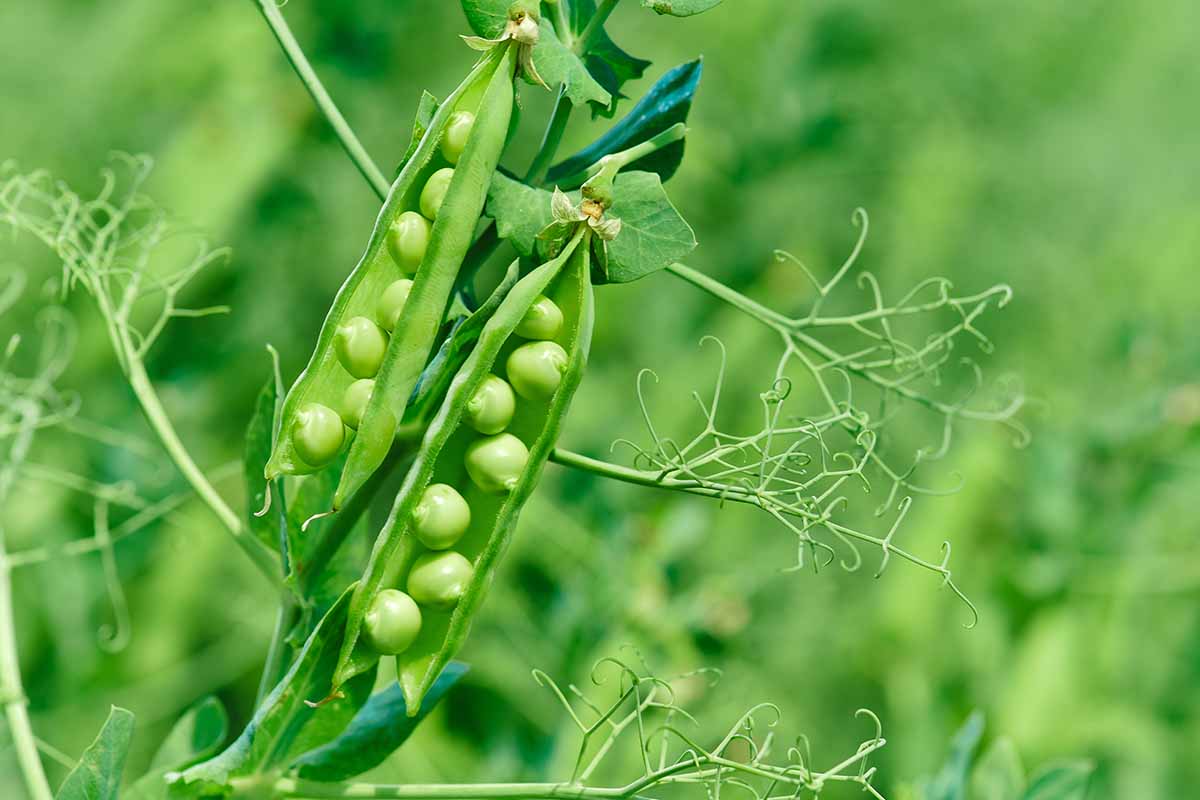
What about you? Do you have a favorite type that I may have missed here, or experience with this cool-season vegetable to share with our readers?
We welcome you to add your success stories or ask questions in our comments section below.
And for more information about growing legumes in your garden, check out these guides next:
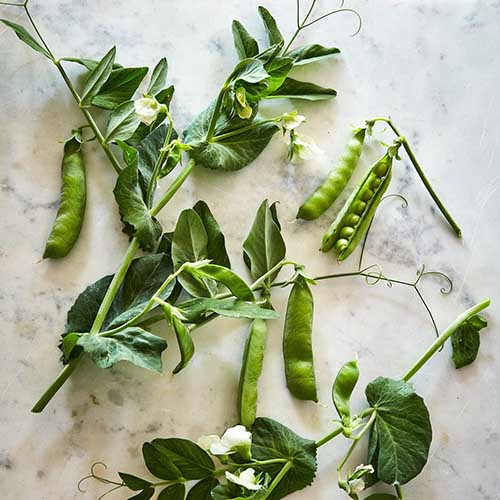
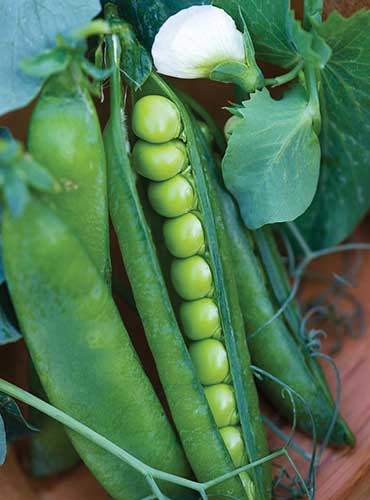
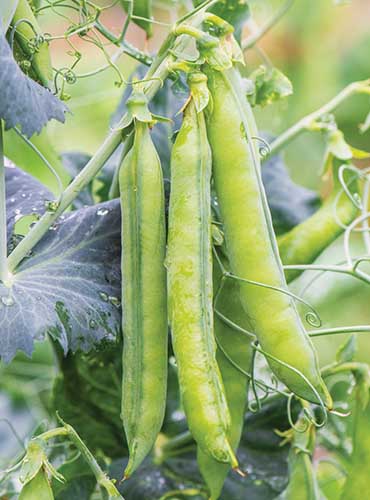
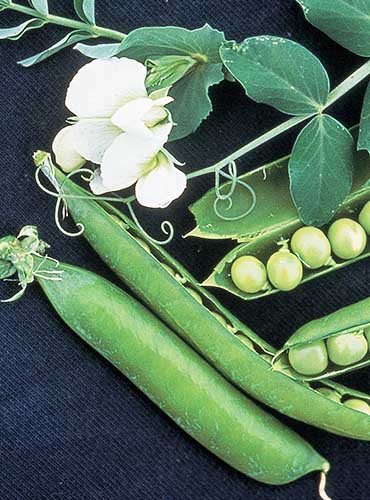
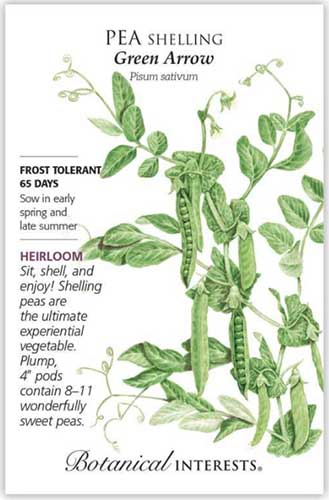

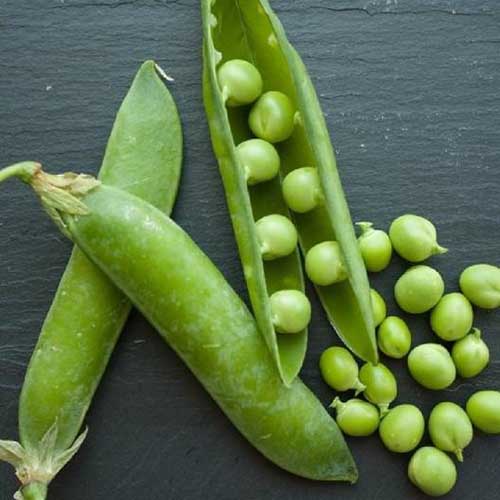
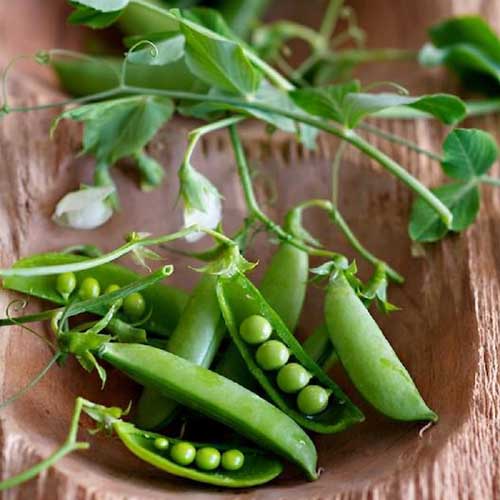
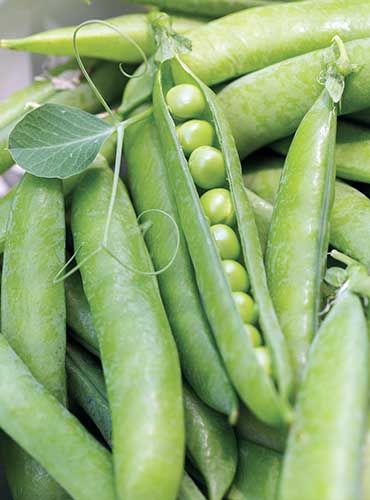
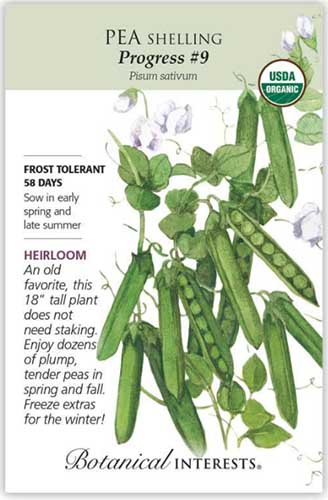
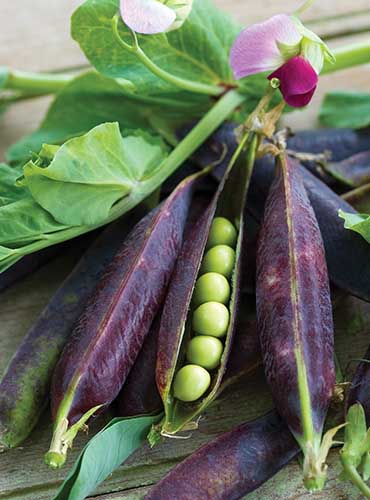
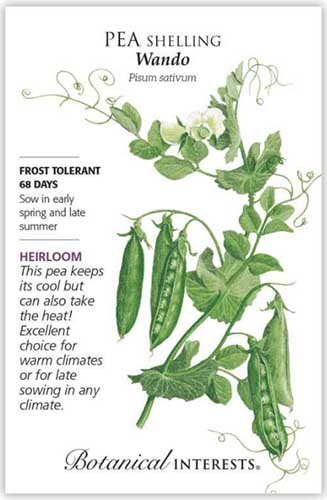
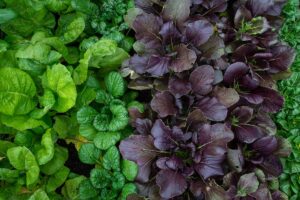
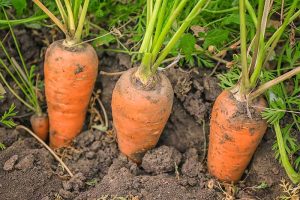
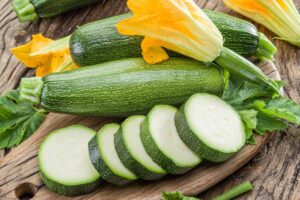
Very very good information. Can you give me proper link or address where to buy these seed for big farm?
You can follow the links to our recommended affiliate vendors’ websites and reach out to their customer service representatives directly to inquire about wholesale options.
Where to buy these peas please
Hello Marie Pease, love your name! Most of the varieties mentioned in this piece have a link to where to buy them, highlighted in blue either in the caption or the end of the writeup, or in both places. Thanks for reading and good luck with the shelling pea selection.